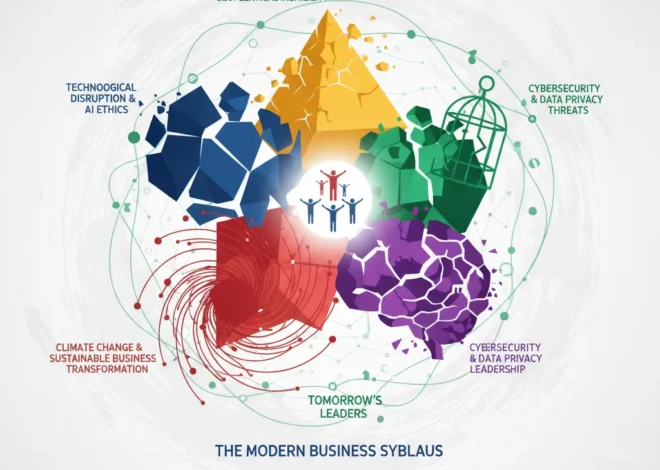
Collision Course: Why the EU’s Carbon Tax Puts a Landmark India Trade Deal on Ice
A High-Stakes Standoff: The EU-India Trade Deal Hits a Green Wall
In the intricate world of global finance and economics, few negotiations are as consequential as the ongoing talks for a Free Trade Agreement (FTA) between the European Union and India. This potential pact between two of the world’s largest economies promises to unlock billions in trade and investment, reshaping supply chains and creating vast opportunities. However, a formidable obstacle has emerged, threatening to derail the ambitious goal of finalizing the deal by the end of the year. The culprit? A groundbreaking, and highly controversial, piece of EU climate legislation: the Carbon Border Adjustment Mechanism (CBAM).
The EU is poised to reject India’s demand for an exemption from this new carbon border tax, a move that pits Brussels’ climate ambitions directly against New Delhi’s developmental priorities. According to a recent report from the Financial Times, the European Commission views the CBAM as a non-negotiable, cornerstone policy for its green transition. This impasse isn’t just a diplomatic squabble; it’s a critical test case for the future of international trade in an era of climate change, with profound implications for investors, business leaders, and the global economy.
Deconstructing the CBAM: What is It and Why Does It Matter?
To understand the depth of this conflict, one must first grasp the mechanism at its heart. The Carbon Border Adjustment Mechanism, or CBAM, is the EU’s flagship policy designed to tackle “carbon leakage.” In simple terms, carbon leakage occurs when companies in the EU, facing stringent carbon pricing under the EU’s Emissions Trading System (ETS), move their production to countries with laxer environmental regulations. This not only undermines the EU’s climate efforts but also puts European businesses at a competitive disadvantage.
CBAM aims to level the playing field. It functions as a tariff on certain carbon-intensive goods imported into the EU, including steel, aluminum, cement, fertilizers, and electricity. Importers will be required to buy “CBAM certificates” corresponding to the carbon price that would have been paid if the goods had been produced under the EU’s own carbon pricing rules. The policy is being phased in, with a transitional period already underway since October 2023, requiring importers to report emissions. The financial levies are scheduled to take full effect in 2026.
For the EU, CBAM is an essential tool for two reasons:
- Environmental Integrity: It ensures that the EU’s climate actions don’t simply displace emissions to other parts of the world.
- Economic Protection: It protects domestic industries from being undercut by foreign competitors who don’t bear the same carbon costs.
The EU maintains that the policy is fully compliant with World Trade Organization (WTO) rules, framing it as an environmental measure, not a protectionist tariff. However, for developing nations like India, the view from the ground is starkly different.
Beyond the Hull: The Deep Economic Currents of a Single Statistic
India’s Stand: A Clash of Development, Economics, and Equity
India’s opposition to CBAM is rooted in decades of climate negotiation principles and pressing economic realities. New Delhi argues that the tax is discriminatory and protectionist, effectively penalizing developing nations. Their case rests on several key pillars:
- Historical Responsibility: India, along with other developing countries, champions the principle of “Common But Differentiated Responsibilities and Respective Capabilities” (CBDR-RC). This principle, enshrined in international climate agreements, posits that developed nations, which have historically contributed the most to greenhouse gas emissions, should bear a greater responsibility for climate action. India sees CBAM as a unilateral move that ignores this crucial context.
- Economic Impact: The tax directly targets sectors that are vital to India’s industrial base and export economy. A significant portion of India’s exports to the EU falls under the CBAM categories, putting billions of dollars of trade at risk.
- Sovereignty and Development: New Delhi argues that each nation should have the autonomy to pursue its own path to decarbonization, one that aligns with its developmental stage and national circumstances. The EU’s CBAM is seen as an attempt to impose its climate policies externally, potentially stifling India’s economic growth.
The table below highlights the core points of contention between the two economic powers, illustrating the deep divide that negotiators must bridge.
| Point of Contention | The European Union’s Position | India’s Position |
|---|---|---|
| Primary Goal of CBAM | To prevent carbon leakage and ensure a level playing field for EU industries. | Viewed as a protectionist trade barrier disguised as a climate measure. |
| WTO Compliance | Asserts full compliance with WTO rules as a non-discriminatory environmental policy. | Challenges its compliance, arguing it is a discriminatory tariff that violates trade norms. |
| Global Climate Equity | Believes all nations must contribute; CBAM encourages global decarbonization. | Argues it violates the “Common But Differentiated Responsibilities” principle. |
| Impact on Trade Deal | CBAM is a non-negotiable part of its Green Deal and must coexist with any FTA. | Demands an exemption as a precondition for a fair and balanced FTA. |
The Ripple Effect: Implications for Investing, Finance, and Global Markets
The EU-India CBAM dispute is a microcosm of a larger shift with far-reaching consequences for the world of finance and investing. As climate policy becomes embedded in trade law, a new set of risks and opportunities emerges that professionals in banking, trading, and investment management must navigate.
Impact on the Stock Market and Sectoral Investing
For investors, the immediate impact is on the valuation of companies in the affected sectors. Indian steel, aluminum, and cement producers with significant exposure to the European market face the prospect of either absorbing the carbon tax, thereby eroding margins, or losing market share. This creates a clear headwind for their stock market performance. Conversely, this regulatory pressure could accelerate the transition to green technologies. Indian companies that proactively invest in decarbonizing their operations—adopting green hydrogen for steel production, for example—could gain a significant competitive advantage in the long run. This creates a new, compelling narrative for ESG-focused investing, moving from a “do-good” philosophy to a “must-have” risk management strategy.
The New Frontier of Financial Technology (Fintech)
The complex reporting requirements of CBAM are a massive headache for corporations but a golden opportunity for the financial technology sector. A new wave of fintech and RegTech (Regulatory Technology) solutions is emerging to meet this demand. These platforms leverage technologies like AI and even blockchain to provide transparent, auditable tracking of carbon emissions across complex global supply chains. For a multinational corporation, knowing the precise embedded carbon in a shipment of steel from a specific Indian plant is now a matter of financial compliance, not just corporate social responsibility. This is driving significant investment into climate-tech and supply chain verification startups, a burgeoning sub-sector of the broader fintech landscape.
The Trillion-Dollar Typo: Why a Small Media Correction Reveals a Huge Risk in Modern Investing
Reshaping the Global Economy and Trading
The broader economic implications are profound. If the EU holds firm, and other blocs like the US consider similar measures, we could see a fragmentation of the global trading system along “green” lines. Supply chains, already re-orienting due to geopolitical tensions, will face a new layer of complexity. Companies may prioritize sourcing from countries with domestic carbon pricing schemes compatible with the EU’s, or they may “onshore” production back to Europe. This could lead to price volatility in key commodities and potentially contribute to inflationary pressures. The banking sector will also have to adapt, as trade finance and corporate lending decisions will increasingly need to factor in the carbon-related tariff risks of their clients’ operations.
This table outlines the key sectors in India that are on the front line of the CBAM policy, as detailed by various economic analyses.
| Sector | Significance to India’s Exports to EU | Potential CBAM Impact |
|---|---|---|
| Iron & Steel | One of the largest export categories to the EU, representing a significant portion of India’s total steel exports. | High. The sector is carbon-intensive, and the additional tariff could be between 20-35% of the export price (source). |
| Aluminum | A key export commodity, with the EU being a major market. | High. Aluminum production is extremely energy-intensive, making it highly susceptible to carbon pricing. |
| Cement | While a smaller export category than metals, it is one of the most carbon-intensive industries. | Very High. The production process is inherently emission-heavy, making exports to the EU potentially uncompetitive under CBAM. |
| Fertilizers | Important for global food supply chains; India is a key producer. | Moderate to High. Production involves significant energy consumption and chemical processes that generate emissions. |
The Path Forward: Is a Compromise Possible?
With the year-end deadline for the FTA looming, the pressure is mounting. The EU’s refusal to grant an exemption makes the path forward treacherous. The stalemate puts the entire trade deal, which also covers sensitive areas like intellectual property and market access, in jeopardy. So, what are the potential outcomes?
- A Delayed or Derailed FTA: If neither side blinks, the most likely outcome is that the FTA negotiations will be frozen or significantly delayed. This would be a missed opportunity for both economies.
- A Creative Compromise: A potential middle ground could involve the EU providing significant technical and financial assistance to help Indian industries decarbonize. A longer, phased-in implementation of CBAM for India could also be on the table.
- Indian Counter-Measures: India could challenge the CBAM at the WTO or implement its own retaliatory tariffs, risking a tit-for-tat trade war that would be damaging for all.
For business leaders and investors, the immediate takeaway is to prepare for uncertainty. Companies exposed to this trade corridor must begin stress-testing their business models against the full implementation of CBAM in 2026. This includes quantifying the potential financial impact, exploring supply chain diversification, and accelerating investments in green technology and carbon accounting systems.
Solving the Market: Why Navigating the Economy is Like Cracking the Ultimate Crossword Puzzle
Conclusion: A Defining Moment for Climate and Trade
The EU-India clash over the carbon border tax is more than a hurdle in a trade negotiation; it is a defining moment at the intersection of climate policy, international economics, and global equity. The EU’s unwavering commitment to its Green Deal is setting a new global standard, forcing trading partners to confront the carbon intensity of their economies. India’s powerful resistance highlights the deep-seated challenges of implementing a uniform global climate policy in a world of vast economic disparities.
How this conflict is resolved will set a precedent for future “green trade” disputes. It will influence investment flows, shape corporate strategy, and determine the pace of industrial decarbonization for years to come. For those in finance, understanding the nuances of this standoff is no longer optional—it is essential for navigating the rapidly evolving landscape of the 21st-century global economy.


